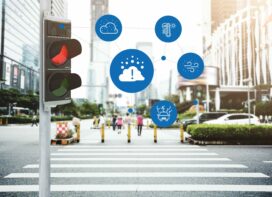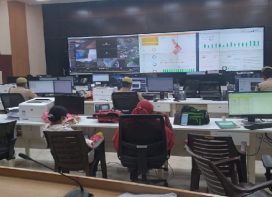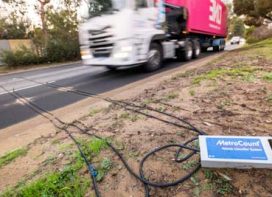So was this technology finally adopted by the Ministry?
We developed the contact cards based on this technology in 2001. At that point of time, the cost of driving licences and smart cards was not lower than र400 to र500 – nobody was willing to be lower than that. Once we actually developed this technology taking into account the requirements in the electronic form, defined the security, etc., and after various States adopted it, suddenly its cost dropped. It dropped to such an extent that these cards are now available for र25. Getting a smart card for र25 was never heard of anywhere in the world then. You don’t even hear of it today in a similar segment.
Awareness on its use is low. Also, ministers and motor vehicle officers still lament, at nearly every transport forum, the non-existence of an interoperable Smart Card for driving licences that can tackle different rules of different states.
It is primarily being used for issuing vehicle registration certificates today and therefore, it is actually seen by only the owners of new vehicles. Moreover, the fact is that this driving licence based Smart Card is interoperable across all states. Without the Smart Cards that we developed, central database is needed for interoperability reasons. If somebody with a Chennai licence comes to Maharashtra and commits an offence, the information has to go to the central database so that it is visible all over. Normally, that is a major problem because that kind of connectivity does not exist and that kind of infrastructure is not set up. A Smart Card is actually solving that very problem since you put the information of the offence into the card itself. So the person holding a card of Chennai committing an offence in Maharashtra will be known as his card will show the offence in it when it is read. The technology must work across regions each of which may use different processes, people and technology. It is for this purpose that the Smart Card is interoperable as designed by this Committee.
When can such a thing happen – when all the cities will have e-challan or something like that?
The Smart Card infrastructure is set up in such a way that technologically it is possible today. The executive part will take time because police have to be equipped with the smart card readers, the RTOs have to be sensitised to that kind of operations, the judiciary has to be involved in reading these Smart Cards – judiciary because the compounding of every licence for every offence is the function of the judiciary part of RTO. So basically, the entire eco-structure has to exist. In 2001 it would have required a specialised hardware. Today you can read cards with regular mobile phones or small gadgets, laptops, and in many other ways.
It is not the issue of the Central database because what our smart cards are actually solving is this very problem of holding a Central database. What is required is a little more extra push.
But that’s still not happening!
I think it requires a little more extra push. It is not the issue of the Central database because what our Smart Cards are actually solving is this very problem of holding a central database. They are providing all the information you would need in a central database. The card readers and every other technology required for it – however small – have to be available throughout the country. With Smart Cards in place, the information is always with the person wherever he goes. The only thing is – it has to be accessed through the deployment of devices. Since that is not happening, the system is not in place.
Does it disappoint you that even after a decade of providing the technology, things haven’t gone further?
There is obviously a sense of disappointment. Whenever you develop a technology, part of it gets deployed, and a part doesn’t get deployed. But I think we need to now revitalise our efforts in such a way that it does get deployed.
But when after the Ministry adopted the technology and things still came to a standstill, did IIT Kanpur send reminders?
I think unfortunately in our country most of the things are driven by people rather than the Government as a whole. So, though it’s a Government policy, the implementation is delayed because someone has to take the ownership. Somebody is there at some place and all we need to do is find that right person at right place.
Does the fact that many foreign countries are making a beeline for India to develop a technology you have already developed a decade ago, disturb you?
I think that gives me the satisfaction of “We were the first”. Our real problem is we look at the models outside that have to be actually customised to suit our needs. Many issues crop up when you take things from outside because most people outside have not seen the scales that we talk of and if we adopt their technology on a smaller scale, most of our systems fail because the small scale implications are carved out from the bigger things. Just like the BRT corridor in Delhi. We actually took a part of the road space and shrunk the road space for normal users. BRT is a very powerful mechanism in China but then, look at the road space that they have! They have created a huge amount of road space. But here, in order to create a BRT, which itself is a good project, they reduced the road space for other users.
Yes. Even the movement of traffic wasn’t taken into consideration.
That is where the problem arises when we imitate the technology from outside without its real adaption. The foreign experts have not seen our scales. They don’t understand them. Most often than not, their population is small, and they do not have heterogenic traffic. They do not have the problems that we face in day to day life. Their roads are smooth. Our road width gets reduced because of a number of reasons – potholes, construction activity, encroachment, etc. Our pedestrian movement is not planned properly, so people keep crossing the roads from everywhere. Lane discipline virtually does not exist. So, when we take technologies from outside and don’t look at these aspects, then the technologies actually fail – however good they may be. And the foreign companies do not have the technical expertise to understand and comprehend our scales.
C-DAC has been underutilised by the Government and administration. When we have this wealth of information in-house, why do you think we aren’t using it?
I will tell you what the role of C-DAC is. C-DAC is basically an R & D organisation. It cannot get into deployment because we neither have that kind of expertise nor do we have that kind of infrastructure including manpower support and many other things. To deploy technologies is a real challenge for us. What C-DAC actually does is, it develops a good amount of technologies and that becomes our intellectual property. We should actually use C-DAC’s infrastructure to develop this technology which will be available PAN India. We can collaborate with others in such a way that this deployment takes place. What is happening is that when we go to the Government or any administrative body, they seek the end-to-end solution. They say, ‘Here is this project, you need to work out the technology and also deploy it’. I think C-DAC’s real handicap has been in the deployment for a mass scale. Its strength is in developing the solution, prototyping it and showing that it will work perfectly. But deployment is where we feel challenged. It’s just that we need to collaborate with that kind of infrastructure setup so that the integration happens.
I think that is where our underutilisation, as you rightly said, exists. So we at C-DAC actually need to work on that. I have just taken over here and have already begun realising that this is our major problem and we have started talking to people about this. We are actually working towards solving this handicap.
What is the vision for C-DAC?
C-DAC has been working on many high-tech areas, state-of-the-art technologies. We have been working on high performance computing, on multi lingual computing, on professional electronics and on many strategic and important national projects including security, e-governance, etc.
As a nation, while India is a known force for its software capabilities, it is not an international force in the hardware – China is. To correct this image, a huge amount of electronic deployment and investment has to take place including in those areas which position the country strategically, for example, developing a micro processor.
In C-DAC, we have been doing lot of work in these areas as well, some of it excellent. My real vision is to actually take the technology to the end users, to the common people. We need to do many things and that includes establishing a lot of collaborations, consolidation among ourselves and prioritising areas so that our efforts do not get scattered. So we need to focus our energies and do a great amount of collaboration on deployment scales.
Often, agencies planning the road projects do not really see through the entire project – neither on management post construction, nor on its proper feasibility. Do you agree?
I think there is huge amount of planning exercise that is needed. If agency A talks to agency B in the design phase, then agency B is already sensitised and chalks out the challenges in the project implementation and ways to tune them. Currently what happens is that agency A builds an infrastructure, say a bridge, and leaves it for agency B to take over from where it left. And that is where the real problem lies because suddenly you might face a massive crisis without knowing the ways to handle it. But if this agency B was involved right in the beginning, it would have got in and acted together with the previous agency. Both together would have already planned out various exits and entries for the better flow of traffic.
I think our problem in India is exactly that – everybody is knowledgeable here but the integration of knowledge is missing. The system is not going together; it is going one after another. So one person, very knowledgeable, implements something but doesn’t look at the concerns of the second person, another very knowledgeable person. So we always get into a situation where rather than solving the problem we start getting into circumventing the problem.
For example we normally recognise people who are trouble shooters but the role of trouble shooters begins only when there is a trouble. If there is no trouble, if everything goes smoothly, if everything is designed beautifully, there is no need to have a trouble shooter. If there is no use of trouble shooter, then what is their importance? So planners are not recognised that much, but trouble shooters are. So, unless the situation comes to a place where a trouble arises, you don’t really see the recognition of a planner.
 TrafficInfraTech Magazine Linking People Places & Progress
TrafficInfraTech Magazine Linking People Places & Progress


